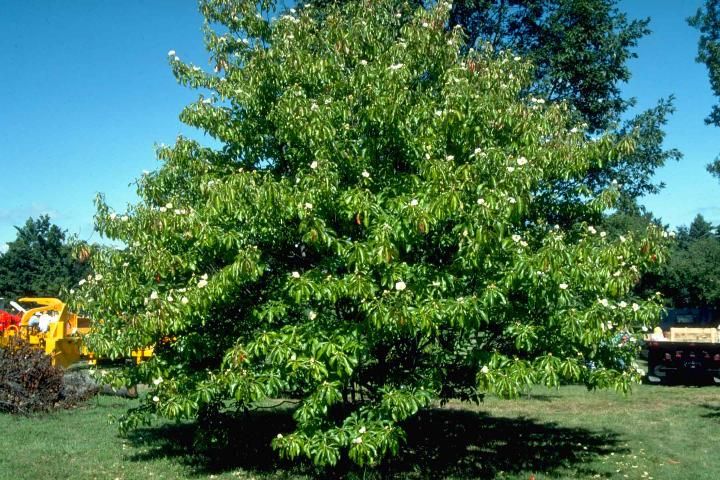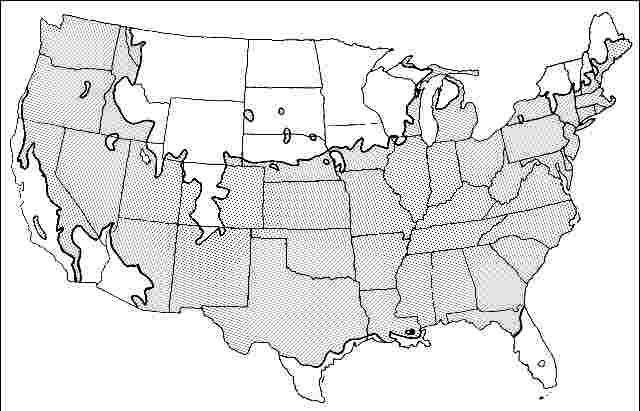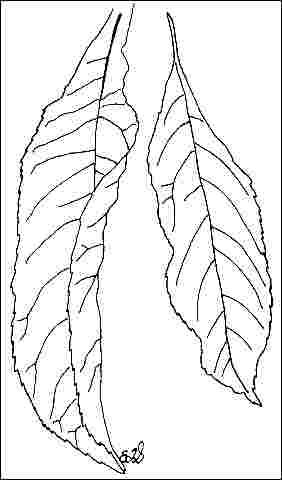Introduction
This is an excellent small tree native to Georgia, reaching a maximum of 30 feet but it is usually smaller in a sunny landscape. It is somewhat pyramidal when young becoming more rounded with age with many thin stems and trunks. It is best used as a specimen or in borders, to show off its fragrant, white, camellia-like flowers, three inches across, that bloom from July to late summer when few other trees bloom. The bright green foliage turns a vivid orange-red in the fall while some flowers are still in bloom. Ridged grey bark with prominent vertical white striations adds winter interest. Franklin-Tree typically grows with numerous vertical stems or trunks originating at or near ground level.

Credit: Ed Gilman
General Information
Scientific name: Franklinia alatamaha
Pronunciation: frank-LIN-ee-uh uh-lah-tah-MAH-hah
Common name(s): Franklin-Tree, Franklinia
Family: Theaceae
USDA hardiness zones: 5A through 8B (Fig. 2)
Origin: native to North America
Invasive potential: little invasive potential
Uses: deck or patio; specimen; container or planter
Availability: somewhat available, may have to go out of the region to find the tree

Description
Height: 15 to 25 feet
Spread: 10 to 15 feet
Crown uniformity: symmetrical
Crown shape: pyramidal, round
Crown density: dense
Growth rate: slow
Texture: medium
Foliage
Leaf arrangement: alternate (Fig. 3)
Leaf type: simple
Leaf margin: serrate
Leaf shape: oblanceolate, obovate, oblong
Leaf venation: pinnate, brachidodrome
Leaf type and persistence: deciduous
Leaf blade length: 4 to 8 inches
Leaf color: green
Fall color: orange, red
Fall characteristic: showy

Flower
Flower color: white/cream/gray
Flower characteristics: very showy
Fruit
Fruit shape: round
Fruit length: .5 to 1 inch
Fruit covering: dry or hard
Fruit color: unknown
Fruit characteristics: does not attract wildlife; not showy; fruit/leaves not a litter problem
Trunk and Branches
Trunk/bark/branches: branches droop; showy; typically multi-trunked; thorns
Pruning requirement: little required
Breakage: resistant
Current year twig color: green, brown
Current year twig thickness: medium
Wood specific gravity: unknown
Culture
Light requirement: full sun, partial sun or partial shade
Soil tolerances: clay; sand; loam; slightly alkaline; acidic; well-drained
Drought tolerance: moderate
Aerosol salt tolerance: unknown
Other
Roots: not a problem
Winter interest: yes
Outstanding tree: yes
Ozone sensitivity: unknown
Verticillium wilt susceptibility: unknown
Pest resistance: resistant to pests/diseases
Use and Management
Franklin-Tree does best in well-drained, rich, acid soil, with ample water, and partial sun in the southern part of its range. Drainage must be excellent and the tree does not tolerate clay soil and is only slightly or moderately drought-tolerant. Best to provide a permanent irrigation system for Franklin-Tree.
Pests
It has no known pests.
Diseases
The most serious problem of Franklin-Tree is a root rot disease. The best protection is to plant in a soil where the disease has not been active. The tree has been difficult to establish in some areas, perhaps because of disease problems. But the beauty of this tree makes your extra effort worthwhile.